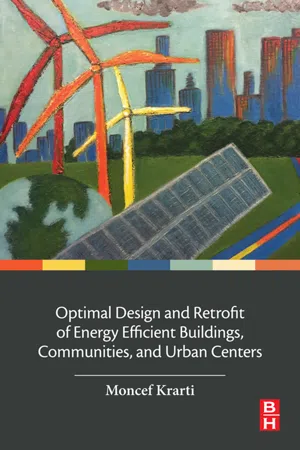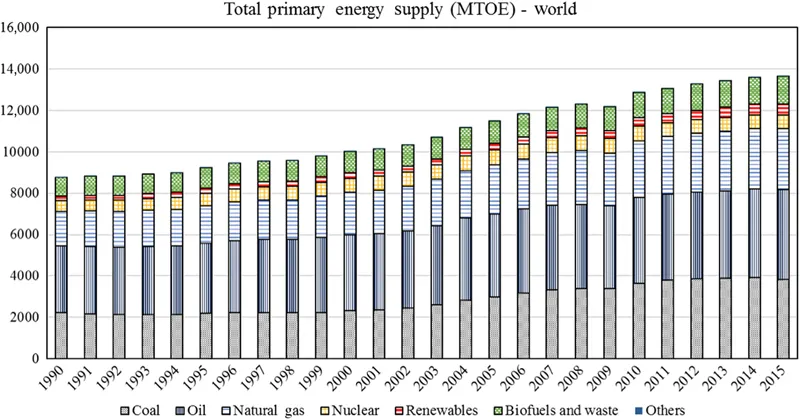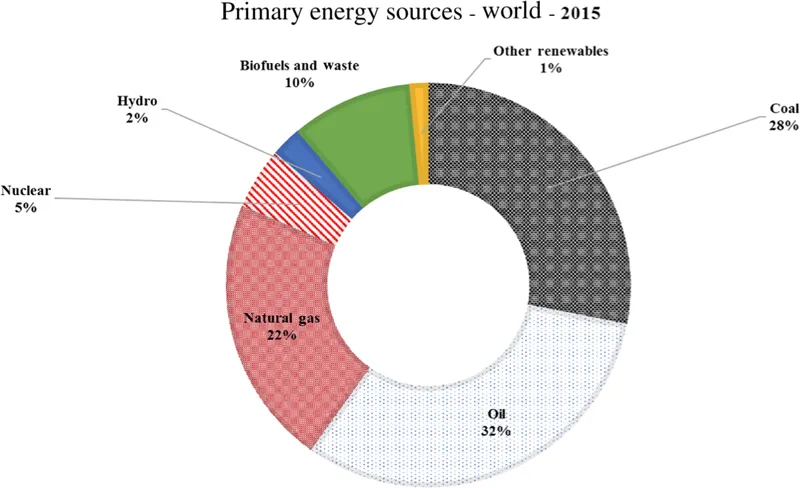
Optimal Design and Retrofit of Energy Efficient Buildings, Communities, and Urban Centers
- 646 pages
- English
- ePUB (mobile friendly)
- Available on iOS & Android
Optimal Design and Retrofit of Energy Efficient Buildings, Communities, and Urban Centers
About This Book
Optimal Design and Retrofit of Energy Efficient Buildings, Communities, and Urban Centers presents current techniques and technologies for energy efficiency in buildings. Cases introduce and demonstrate applications in both the design of new buildings and retrofit of existing structures. The book begins with an introduction that includes energy consumption statistics, building energy efficiency codes, and standards and labels from around the world. It then highlights the need for integrated and comprehensive energy analysis approaches. Subsequent sections present an overview of advanced energy efficiency technologies for buildings, including dynamic insulation materials, phase change materials, LED lighting and daylight controls, Life Cycle Analysis, and more.
This book provides researchers and professionals with a coherent set of tools and techniques for enhancing energy efficiency in new and existing buildings. The case studies presented help practitioners implement the techniques and technologies in their own projects.
- Introduces a holistic analysis approach to energy efficiency for buildings using the concept of energy productivity
- Provides coverage of individual buildings, communities and urban centers
- Includes both the design of new buildings and retrofitting of existing structures to improve energy efficiency
- Describes state-of-the-art energy efficiency technologies
- Presents several cases studies and examples that illustrate the analysis techniques and impact of energy efficiency technologies and controls
Frequently asked questions
Information
Introduction
Abstract
Keywords
1.1. Global trends in energy consumption
1.1.1. Primary Energy Supply


. (Source, IEA, 2017).

Table of contents
- Cover
- Title page
- Table of Contents
- Copyright
- About the Authors
- Preface
- Conversion Factors (Metric to English)
- Chapter 1: Introduction
- Chapter 2: Advanced Building Energy Efficiency Systems
- Chapter 3: Control Strategies for Building Energy Systems
- Chapter 4: Utility Rate Structures and Grid Integration
- Chapter 5: Life-Cycle Cost and Energy Productivity Analyses
- Chapter 6: Integrated Design and Retrofit of Buildings
- Chapter 7: Integrated Design of Communities
- Chapter 8: Integrated Design of Energy Efficient Cities
- Chapter 9: Analysis of Large-Scale Energy Efficiency Programs
- Index